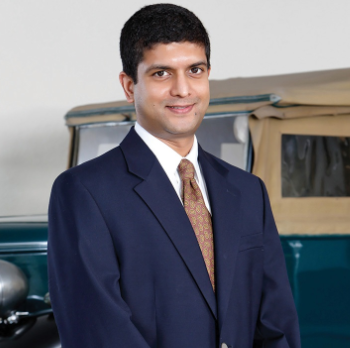The Indian domestic auto component market has been showing an impressive growth and continues to hold a lot of potential for both the local and overseas entrants. Over the years this industry has shown cyclical tendency for demand as has been the case the world over. However, in the recent past this cyclical trend has become more frequent, necessitating revisit by both the OEMs and the component manufacturers of their business model and strategies.

Though the aftermarket business provides cushion to cyclicality, over the last few years, aftermarket business has also experienced cyclicality similar to OEM business. In order to face the business impact due to cyclicality, various measures are being considered by both the OEMs and the component manufacturers to cater to the aftermarket requirements. It is also the responsibility of the parts makers to ensure both genuine parts and service are available for end customers. In the past few years, the Rane Group companies have focused on improving service levels to the aftermarket and ensure genuine parts are available to the end customers.
Increase in vehicle parc augurs well for the aftermarket demand. As per various market studies, the domestic Indian automotive aftermarket is expected to grow at a CAGR of 10-12 per cent over the next few years. According to Frost and Sullivan, total manufacturer-level parts revenue in India will reach $16.5 billion by 2021. With increasing complexity of vehicle technologies, automotive servicing will consolidate, and the share of the organized market will expand. The small retailers and garages that support counterfeit products will become unviable with the growing overhead costs, lack of quality labour and tools to diagnose complex vehicle technologies.
Indian auto customers have started factoring parts availability at affordable cost, network of service centres and maintenance cost in their purchase decision. This has resulted in OEMs focusing on the aftermarket parts and services business. There is also entry of foreign auto component players in the aftermarket space.
The focus of Rane Group companies on the aftermarket is all the greater with the setting up of new division, Rane Auto Parts (RAP), which deals exclusively with the aftermarket. In the last 12 months, this division has introduced eight different new products in the aftermarket, to ensure that the end customers have the option of choosing genuine and quality parts to be replaced in their vehicles.
While there is significant opportunity in the aftermarket business, it also brings with it fresh challenges that need to be addressed. Due to the attractiveness of the aftermarket, over the years, there had been a huge influx of unorganized players.
Apart from the unorganized sector, the other major issue is that of the spurious/counterfeit products that are available in the market place. In fact, out of the estimated $500 billion of aftermarket auto component business at the global level, around six per cent is attributed to counterfeit products.
In India, counterfeit components account for 45 per cent of passenger car aftermarket parts sales. There are several reasons for the presence of both the unorganized and counterfeit products in the aftermarket. One key aspect is the availability of genuine products from component manufacturers and the other is competitive pricing. Added to this, India does not have mandated safety standards for aftermarket products.
In the Western world, the supplier has to get his parts certified by the testing body depending on the parts for supply in the aftermarket. In India, supplies from domestic manufacturers as well as imports of counterfeit products are not being checked or regulated. Further, it is not possible to quantify production in the unorganised sector and trading of counterfeit goods, as much of it remains unreported, undetected and unnoticed.
Also, the awareness level of end users (car owners) is very low to recognize the quality difference and safety concerns arising from usage of cheaper counterfeit products as majority of the decisions on parts replacement are taken by the local mechanic in the garages.
The other big challenge is the number of new vehicle models, especially in passenger car and utility vehicles, that get added more frequently, leading to the growing need for stocking up a very high range of products for servicing the aftermarket. This, coupled with the absence of a robust forecasting system for estimating the parts requirement for the aftermarket, has led to gaps in genuine product availability and giving room for unorganized players and counterfeit products to spread in the market place.
It is very important that this issue is tackled by both the OEMs and the parts manufacturers together. Product availability through both the channels, namely, the OE spares channel and the independent aftermarket channel of genuine parts makers, is the key to check the growth of such unorganized players. At Rane, in line with its focus on creating customer delight through total quality, the parts serviced for the aftermarket go through the same manufacturing process in the same line as that produced for the OEMs, thus ensuring that the end customers have peace of mind that high quality products are provided in the vehicles during repair or service.
On the technology front, in line with what has already happened in the developed markets overseas, e-tailing of auto parts would evolve in India as well and is currently in a nascent stage. Vehicle manufacturers have already started creating e-commerce platforms to sell their accessories and genuine spares in the aftermarket. There is also specialized e-commerce market place offering alternate channel to reach out to garage owners, retailers and end customers. However its impact will be low in the eco-system.